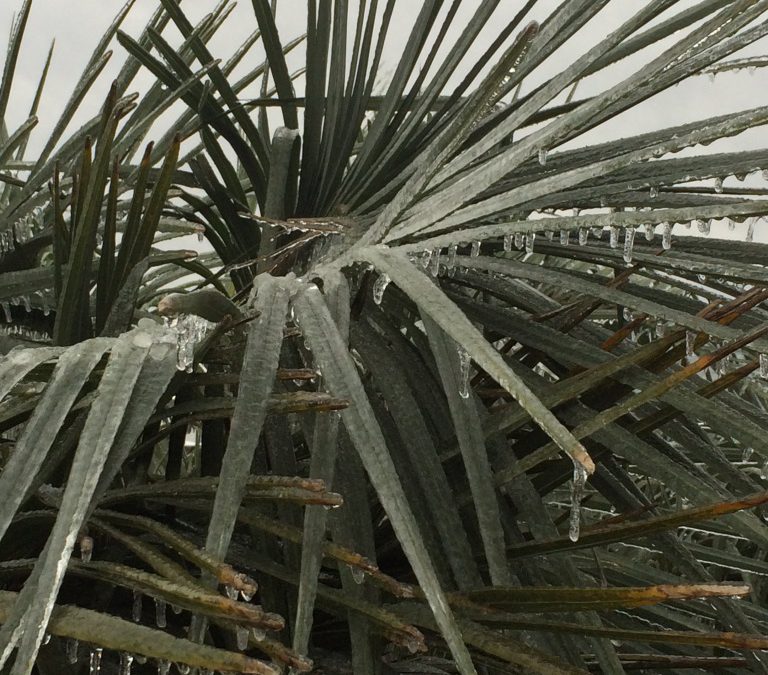
by Mary Salinas | Feb 4, 2014
The freezing rain last week across the panhandle left icicles hanging from street signs, rooftops, trees, shrubs and palms. Many people now wonder if their palms will survive the assault of the hard freeze. The chance of survival depends on the following factors:
- the most important consideration is the species of palm; a few of the most cold tolerant that are more readily available are pindo palm, mule palm, European fan palm, Chinese fan palm, needle palm, cabbage palm, and dwarf palmetto
- whether the palm is in an area protected by other vegetation or buildings
- proper fertilization with 8-2-12-4 has been followed
- palms have been properly pruned, i.e. only dead fronds have been removed from the crown (overtrimming by removing green fronds is a stress to the palm)
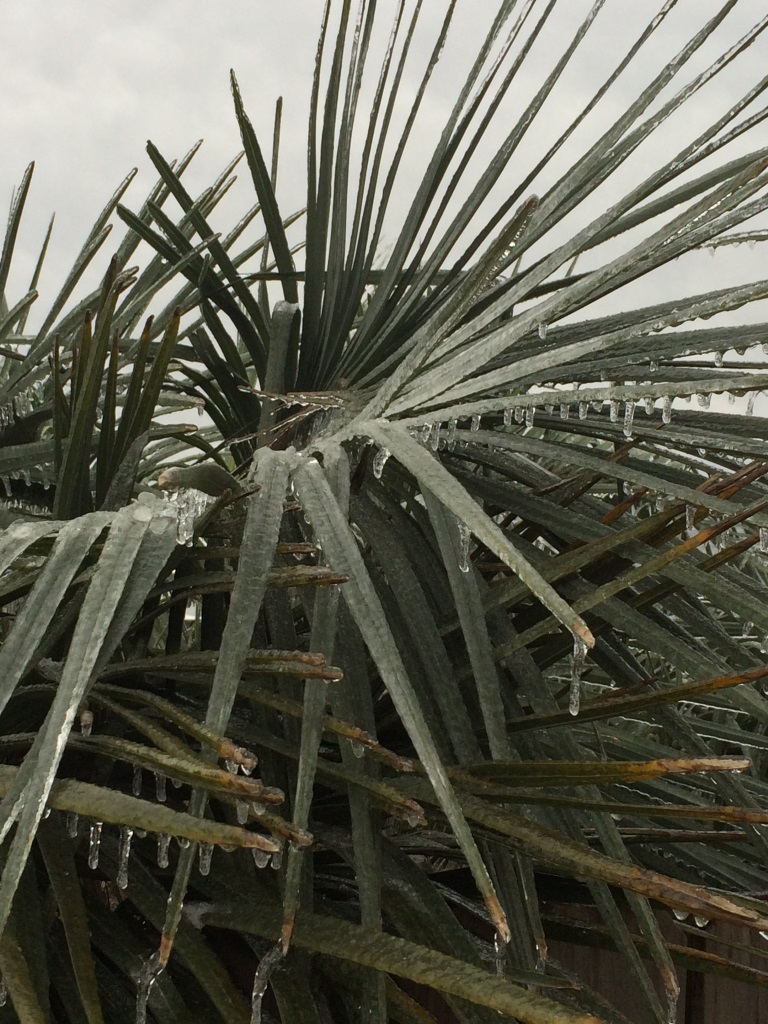
Icy pindo palm. Photo by Mary Derrick UF IFAS.
The best approach is to leave the palm alone until all danger of frost or freeze is past. Avoid the temptation to remove any of the dead fronds; they will help insulate and protect the meristem, or bud, that will produce new shoots.
If the palm is not too tall, in the spring check to see if the spear leaf (the newest frond that usually stands straight up and has not opened) can be easily pulled out. If the spear leaf does not pull out, the likelihood that the palm has survived is good. Don’t despair if the spear leaf does pull out as the meristem below it may still survive. The best strategy in that event is to remove the dead spear leaf and treat the bud area below the spear leaf with a copper fungicide to reduce the chance of infection of the bud. Be sure to use a copper fungicide and not a copper fertilizer, like copper sulfate.
Once spring comes and you find that the palms have survived, don’t be alarmed if the first new frond is deformed or has dead tips. The fronds that follow will most likely be normal. The palm will be building its depleted food reserves with new leaves so do not remove any fronds that have any green on them whatsoever. All green tissue is making food for the palm and helping it to recover from the cold stress. Only remove fronds that have completely died and have no green tissue.
When temperatures warm and the palms are actively growing, apply a palm fertilizer with the formulation of 8-2-12-4 with micronutrients.
For more information please see the following University of Florida IFAS publications:
Palms for North Florida
Cold Damage on Palms
Fertilization of Field-grown and Landscape Palms in Florida
Pruning Palms
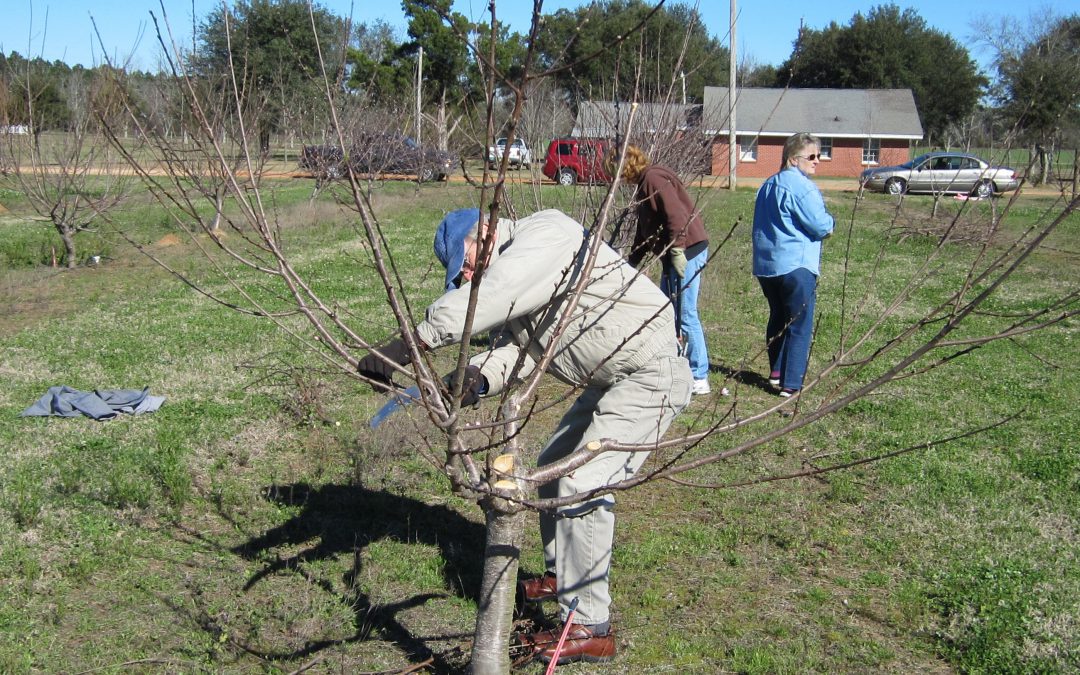
by Blake Thaxton | Feb 4, 2014
February is not a month many think of as a big gardening month, although the preparation and maintenance practices performed in February can be critical to the success of an orchard for the rest of the year. Stone Fruit (Peaches, Nectarines) in particular need special care in the dormant season. During the dormant season pruning must be done to develop the best shape for the stone fruit species to bear fruit. Also, because of the disease pressures associated with stone fruit in Northwest Florida, some chemical sprays need to be added to the agenda in order to control disease and insect pests.
Pruning
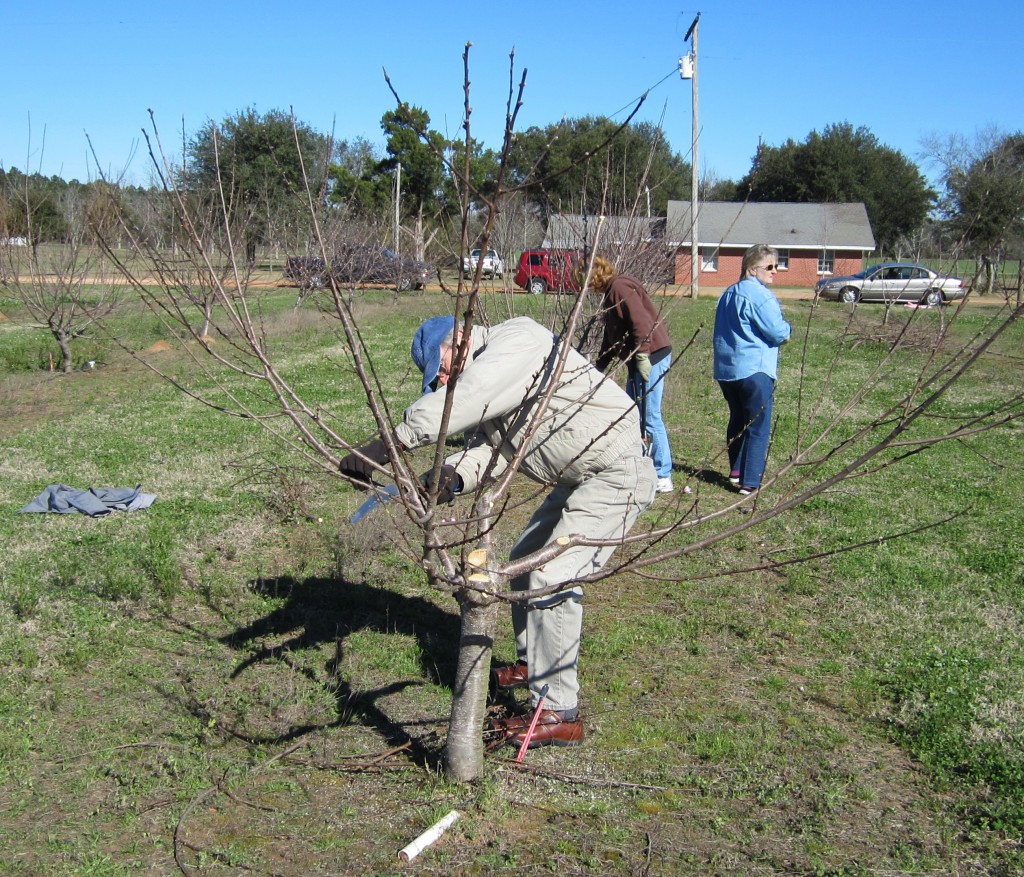
Santa Rosa County Master Gardener Pruning a Stone Fruit tree at the WFREC
Peaches and Nectarines should be pruned to an open center or vase shape. This will allow a well distributed fruit set to develop and will keep the crop load at a controlled amount that can produce quality fruit. During the first year of dormancy a main scaffold (3 or 4) should be chosen to form the open vase shape structure that is desired. The desired scaffolds should be 6 inches apart vertically and sit at a 45° angle from the trunk of the tree. At the second year of dormant pruning, two to three secondary branches should be selected off of each scaffold branch. Remove all of the other secondaries off of the scaffolds and prune back the selected secondaries to 20-36 inches. The following video by the North Carolina Extension Service will give a good idea how Peaches and Plums need to be pruned.
For more information on pruning: Training and Pruning Florida Peaches, Nectarines, and Plums
Dormant Spray
This time of year trees are dormant, so action is critical to stay ahead of disease and insect pests. Peaches and Nectarines need to be sprayed with several products in order to help guard against Scale insects and Mites, Bacterial Spot, and Leaf Curl. Dormant or horticultural oils need to be applied twice 10-14 days apart for Scale and Mites. Oil efficacy is determined by coverage, as the material suffocates pests. Oil sprays need to be performed when temperatures are between 40º and 85º F. Do not apply oil after bud break. A copper based fungicide labeled for stone fruit can be sprayed at this time of year for Bacterial Spot and a sulfur based product or Chlorothalonil need to be sprayed for leaf curl control. Do not apply copper products after blooms or leaves appear. Always follow the label when spraying products on fruit trees!
For more information on Peaches and Nectarines visit UF/IFAS Electronic Data Information Source.
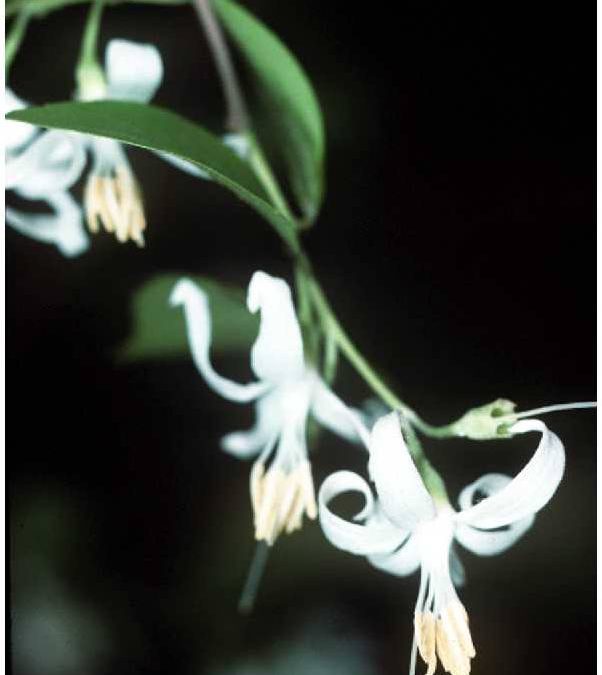
by Alex Bolques | Feb 4, 2014
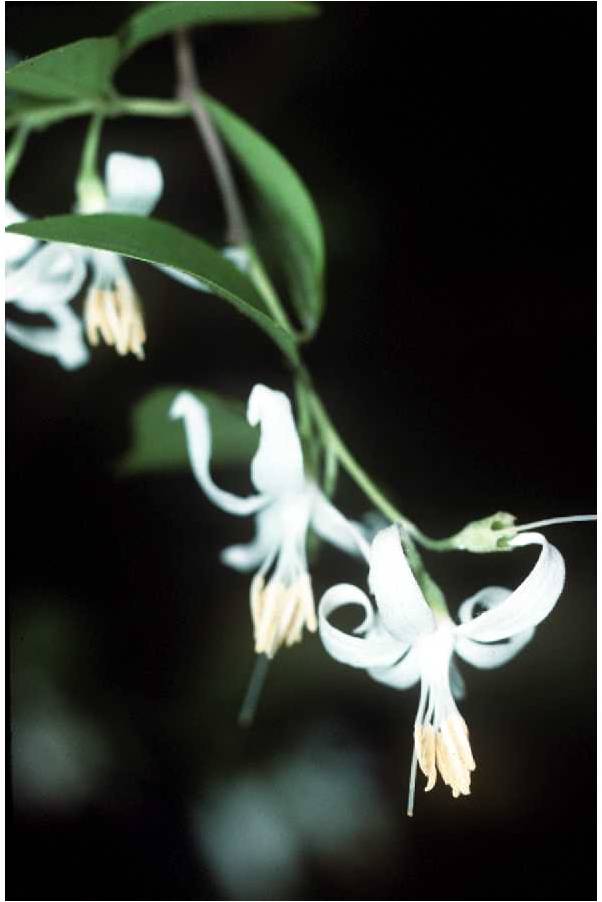
Robert H. Mohlenbrock @ USDA-NRCS PLANTS Database / USDA SCS. 1991. Southern wetland flora: Field office guide to plant species. South National Technical Center, Fort Worth.
Found throughout the North Florida Panhandle, the American snowbell, Styrax americanus, is a native small flowering tree. In his book, The Trees of Florida, Gil Nelson describes the blossoms as charming with “the thin, reflexed (flower) petals curve back over the flower base, leaving an attractive mass of yellowish stamens protruding from the star-shaped corolla”. It has dark green deciduous foliage, with the tree reaching up to 16 feet in height. The attractive blooms appear April – July.
Considered as an understory tree, American snowbell grows best in wet partially shaded areas and is somewhat tolerant of full sun. It prefers wet places such as swamps, wet woods, edges of cypress ponds and moist to wet, cool, acid sandy to sandy loam soils. Wet areas of the home landscape where water puddles occur provide adequate growing conditions for the American snowbell.
Wildlife benefits include nectar for bees and butterflies and edible fruit for birds. To try American snowbell in the landscape, check with local native plant nursery or search online. Note: other Styrax species can be found online that are non-native.
Other source: The Native Plant Database






